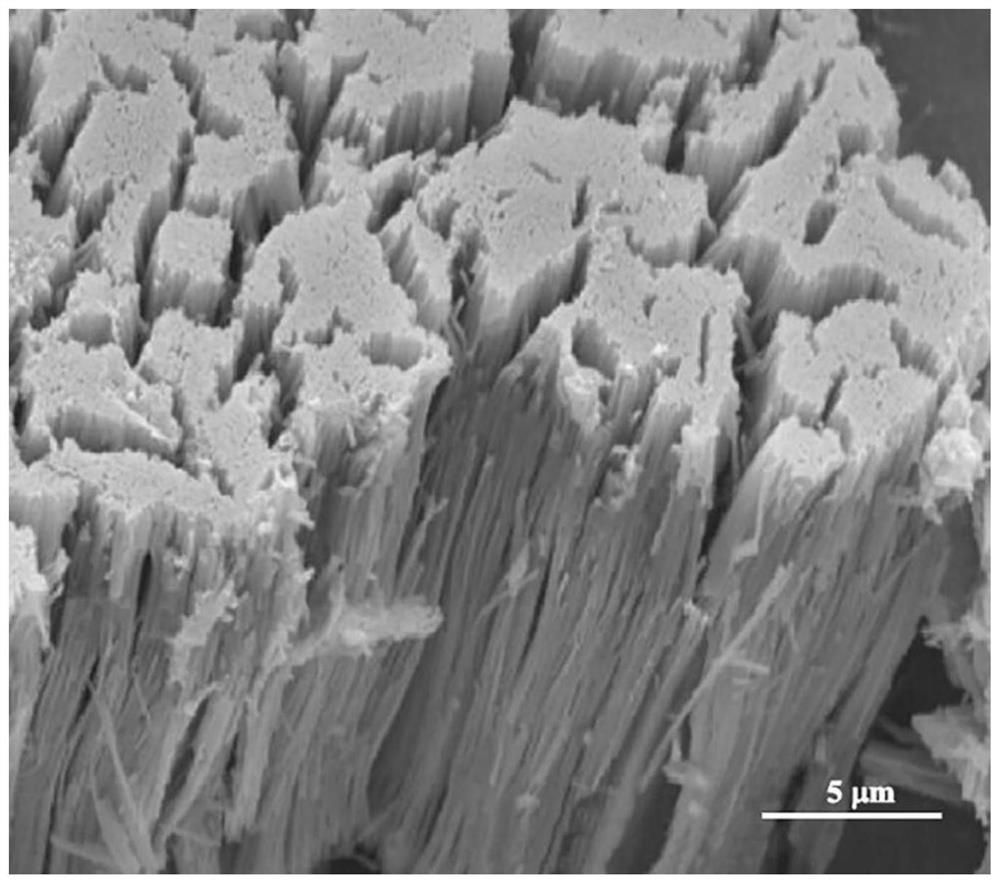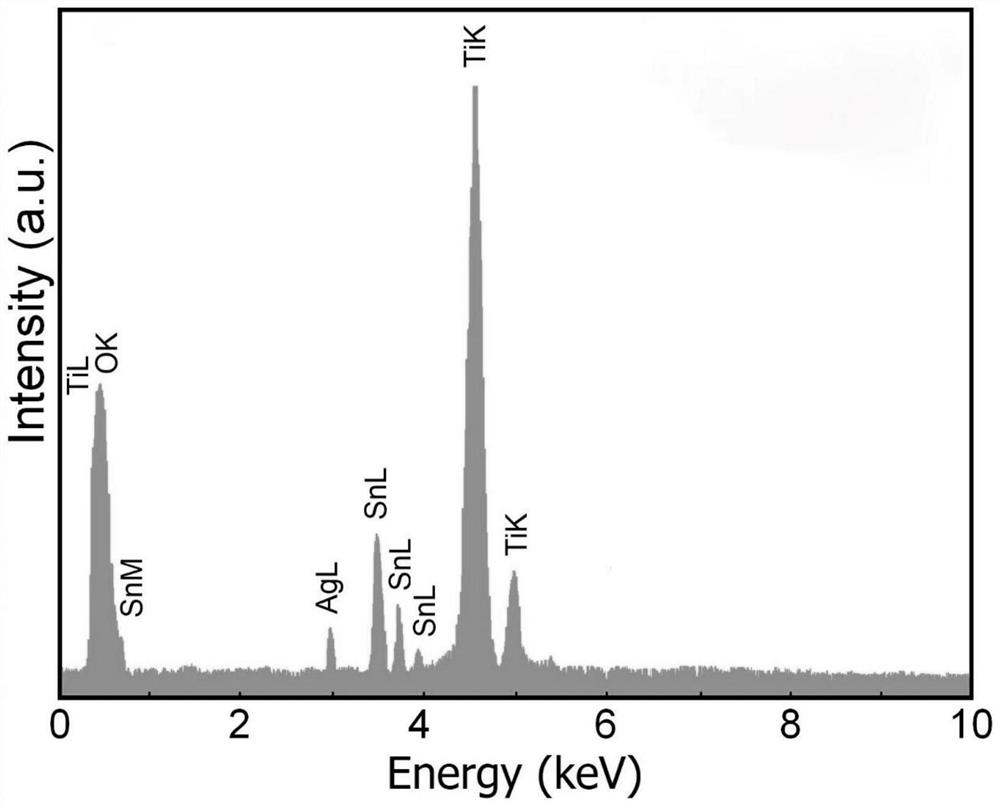Nanotube photocatalytic bactericide as well as preparation method and application thereof
A nanotube and photocatalytic technology, applied in the direction of catalyst activation/preparation, bactericide, chemical instrument and method, etc., can solve the problem of no nanotube photocatalytic bactericide
- Summary
- Abstract
- Description
- Claims
- Application Information
AI Technical Summary
Problems solved by technology
Method used
Image
Examples
Embodiment 1
[0071] The preparation method of the nanotube photocatalytic bactericide of the present embodiment comprises the following steps:
[0072] Step 1: Preparation with SnO 2 Porous alumina templates for nanotubes
[0073] Take a porous alumina template, the porous alumina template is a single pass, the pore diameter is 30nm, the pore spacing is 65nm, and the pore depth is 5μm±0.2μm. Soak in SnCl with a concentration of 0.02mol / mL at a temperature of 25°C 4 ·5H 2 O aqueous solution for 4h.
[0074] From the above SnCl 4 ·5H 2 The porous alumina template was taken out from the O aqueous solution, and after calcination at a high temperature of 550 ° C for 2 h, the SnO 2 Porous alumina templates for nanotubes.
[0075] The above with SnO 2 The porous alumina template of nanotubes was first washed with absolute ethanol for 3 times, and then washed with distilled water for 3 times, and dried at 60 °C for 6 h to obtain the dried SnO 2 Porous alumina templates for nanotubes.
[...
Embodiment 2
[0087] The preparation method of the nanotube photocatalytic bactericide of the present embodiment comprises the following steps:
[0088] Step 1: Preparation with SnO 2 Porous alumina templates for nanotubes
[0089] Take a porous alumina template, the porous alumina template is a single pass, the pore diameter is 30nm, the pore spacing is 65nm, and the pore depth is 5μm±0.2μm. Soak in SnCl with a concentration of 0.5mol / mL at a temperature of 25°C-30°C 4 ·5H 2 O aqueous solution for 4h.
[0090] From the above SnCl 4 ·5H 2 The porous alumina template was taken out from the O aqueous solution, and after calcination at a high temperature of 550 ° C for 2 h, the SnO 2 Porous alumina templates for nanotubes.
[0091] The above with SnO 2 The porous alumina template of the nanotubes was first washed with absolute ethanol for 4 times, then washed with distilled water for 3 times, and dried at 60°C for 6 hours to obtain the dried SnO 2 Porous alumina templates for nanotube...
Embodiment 3
[0100] The preparation method of the nanotube photocatalytic bactericide of the present embodiment comprises the following steps:
[0101] Step 1: Preparation with SnO 2 Porous alumina templates for nanotubes
[0102] Take a porous alumina template, the porous alumina template is a single pass, the pore diameter is 30nm, the pore spacing is 65nm, and the pore depth is 5μm±0.2μm. Soak in SnCl with a concentration of 0.1mol / mL at a temperature of 25°C-30°C 4 ·5H 2 O aqueous solution for 4h.
[0103] From the above SnCl 4 ·5H 2 The porous alumina template was taken out from the O aqueous solution, and after calcination at a high temperature of 550 ° C for 2 h, the SnO 2 Porous alumina templates for nanotubes.
[0104] The above with SnO 2 The porous alumina template of the nanotubes was first washed with absolute ethanol for 3 times, then washed with distilled water for 4 times, and dried at 60 °C for 6 h to obtain the dried SnO 2 Porous alumina templates for nanotubes. ...
PUM
| Property | Measurement | Unit |
|---|---|---|
| pore size | aaaaa | aaaaa |
| specific surface area | aaaaa | aaaaa |
| diameter | aaaaa | aaaaa |
Abstract
Description
Claims
Application Information
 Login to View More
Login to View More - R&D
- Intellectual Property
- Life Sciences
- Materials
- Tech Scout
- Unparalleled Data Quality
- Higher Quality Content
- 60% Fewer Hallucinations
Browse by: Latest US Patents, China's latest patents, Technical Efficacy Thesaurus, Application Domain, Technology Topic, Popular Technical Reports.
© 2025 PatSnap. All rights reserved.Legal|Privacy policy|Modern Slavery Act Transparency Statement|Sitemap|About US| Contact US: help@patsnap.com



